A dangerous trend is occurring on American roadways, one that’s putting those on foot directly in harm’s way: Pedestrian deaths are increasing at an unprecedented rate. And it’s nothing new – these tragedies have been on the uptick for years.
While so much focus remains on making drivers safer, why – and how – are we failing pedestrians?
Recent Pedestrian Deaths
An estimated 7,508 pedestrians died in traffic crashes in 2022 in the United States, according to the Governors Highway Safety Association.
The GHSA suggests the uptick in pedestrian deaths is likely the result of unsafe driving habits, such as excessive speeding, drunk and drugged driving and general distraction. The organization also points the finger at infrastructure it says is more conducive and safer for drivers instead of pedestrians.
Pedestrian Fatalities in the Northeast
Closer to home, projected pedestrian death totals in the Northeast were a mixed bag. The breakdown by state with the percentage of change from 2021 to 2022 includes:
Connecticut: 62 deaths, +10.7% increase
Massachusetts: 100; +31.6% increase
Maine: 21; +5.0%
New Hampshire: 16; +77.8%
New Jersey: 190; -12.4%
New York: 298; -2.0%
Rhode Island: 7; +/-0%
Vermont: 7; -12.5%
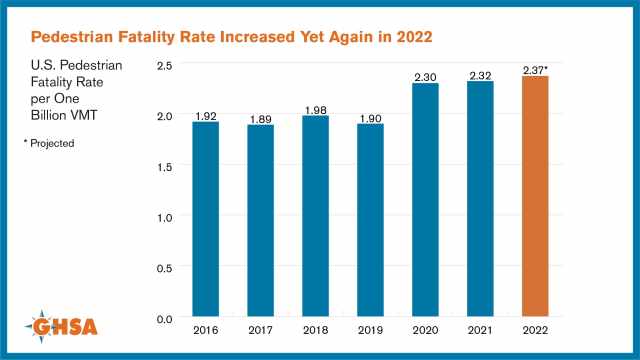
Pedestrian Deaths Per Year
2022’s pedestrian death totals are the latest results in a disturbing ongoing trend. From 2010-2021, U.S. pedestrian fatalities increased from 4,302 to an estimated 7,624, a whopping 77% jump. Over the same time period, all other traffic-related deaths grew by 25%, while total traffic fatalities increased by 31%.
A closer look at pedestrian deaths per year:

Why Are Pedestrian Deaths On the Rise?
There are a number of likely culprits responsible for the rise in pedestrian deaths, but experts most often point to one more than any other: the increase in SUVs on the road. The numbers support this theory. Although passenger cars remain most likely to be involved in fatal pedestrian crashes, the number of deaths involving SUVs grew 120% from 2012-2021, compared to 26% for cars. (Their popularity continues to rise, with light trucks including SUVs making up 78% of total light vehicle sales in 2021.)
The issue with SUVs is twofold. The large body and elevated carriage of SUVs create more significant blind spots for motorists, making it easier for pedestrians – particularly children – to go unseen. An Indiana news station demonstrated this in an experiment that proved seven children could fit in a line stretching out from the front bumper of an SUV without the driver seeing any of them.
The vehicle’s design is also responsible for the increased likelihood a pedestrian will die after being struck by one. The higher bumpers and front ends of larger vehicles means pedestrian victims often get struck in the torso or head, damaging vital organs. Sedans, on the other hand, most commonly strike pedestrians in their lower extremities. Furthermore, when a victim gets hit by a car, they are more likely to be pushed onto the hood or roof of the car, or off to the side. A pedestrian hit by a SUV will usually be knocked forward and possibly run over.
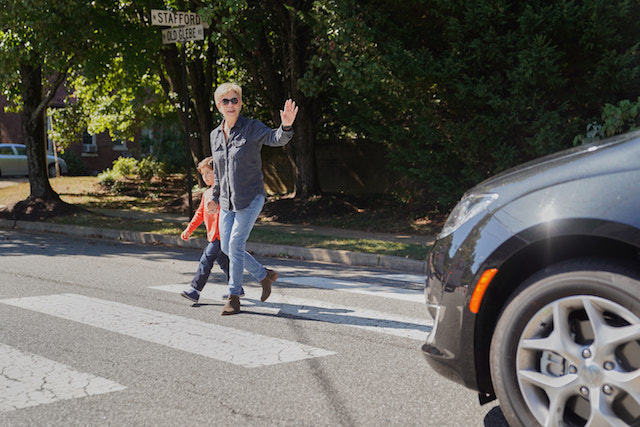
How to Stay Safe
Safety is always the top priority on the road, and following basic safety procedures will go a long way. These tips from the National Highway Traffic Safety Administration will help keep both pedestrians and motorists safe.
Pedestrians
- Be predictable. Follow the rules of the road and obey signs and signals.
- Walk on sidewalks whenever available.
- If there is no sidewalk, walk facing traffic and as far from traffic as possible.
- Keep alert at all times; don’t be distracted by electronic devices that take your eyes (and ears) off the road.
- Whenever possible, cross streets at crosswalks or intersections, where drivers expect pedestrians. Look for cars in all directions, including those turning left or right.
- If a crosswalk or intersection is not available, locate a well-lit area where you have the best view of traffic. Wait for a gap in traffic that allows enough time to cross safely; continue watching for traffic as you cross.
- Never assume a driver sees you. Make eye contact with drivers as they approach to make sure you are seen.
- Be visible at all times. Wear bright clothing during the day, and wear reflective materials or use a flashlight at night.
- Watch for cars entering or exiting driveways, or backing up in parking lots.
- Avoid alcohol and drugs when walking; they impair your abilities and your judgment.
Motorists
- Look out for pedestrians everywhere, at all times. Safety is a shared responsibility.
- Use extra caution when driving in hard-to-see conditions, such as nighttime or bad weather.
- Slow down and be prepared to stop when turning or otherwise entering a crosswalk.
- Yield to pedestrians in crosswalks and stop well back from the crosswalk to give other vehicles an opportunity to see the crossing pedestrians so they can stop too.
- Never pass vehicles stopped at a crosswalk. There may be people crossing that you can’t see.
- Never drive under the influence of alcohol and/or drugs.
- Follow the speed limit, especially around people on the street.
- Follow slower speed limits in school zones and in neighborhoods where children are present.
- Be extra cautious when backing up – pedestrians can move into your path.
For more safety advice, and to learn about free community programs, visit AAA.com.
57 Thoughts on “Why Are Pedestrian Deaths on the Rise?”
Leave A Comment
Comments are subject to moderation and may or may not be published at the editor’s discretion. Only comments that are relevant to the article and add value to the Your AAA community will be considered. Comments may be edited for clarity and length.




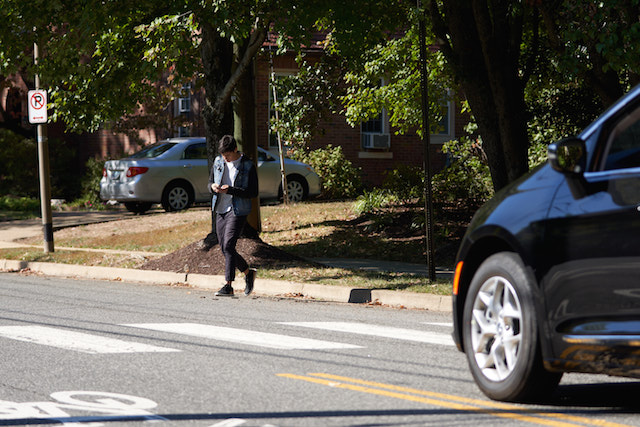
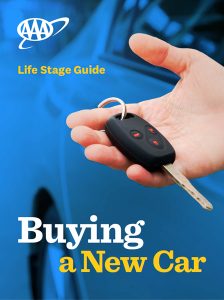






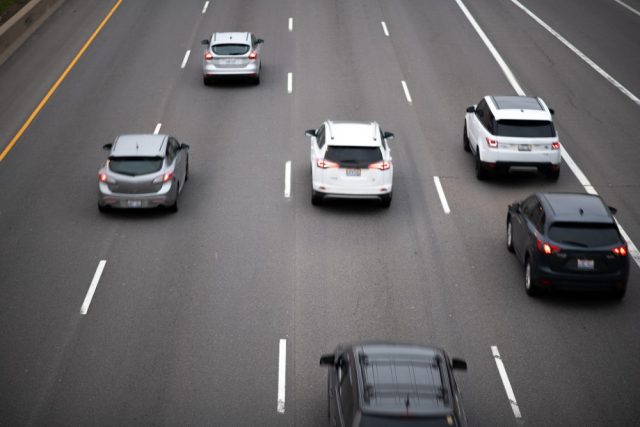
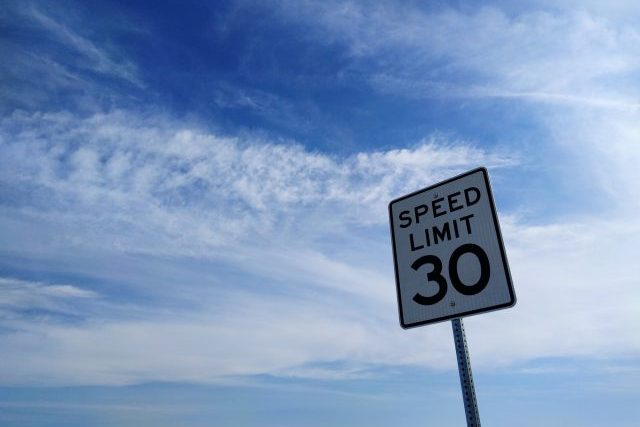
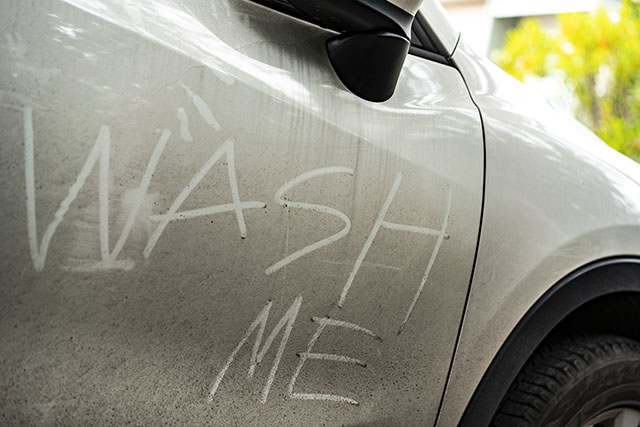


You should acknowledge that pedestrians are a part of the problem too. Since we have become a “pedestrians have the right – of- way” culture people have stopped looking before they cross a road or cross from a store into a parking lot. Often they don’t even pause before barreling onto the pavement. We no-longer teach kids that they are also responsible for their own safety either. It only takes a second to look both ways before crossing a road and it could save your life. If you fail to do this and are in and accident you may be legally right but you may also be severely injured or dead. Pedestrians cannot control how well or poorly a driver drives but they can help insure their own safety by looking both ways.